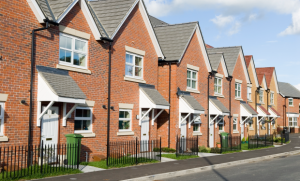As the UK moves towards winter and substantially increasing energy costs, the housing crisis is not looking to be getting better any time soon. There has been an increasing global demand due to humanitarian crises and the pandemic we faced for over two years. Because of the continued limited available social housing, more people are being pushed into a booming private rental sector – which is notoriously far from cheap.
In fact, according to housing charity Shelter the UK is suffering from a chronic shortage of housing, especially with regard to social homes. In the past year, only 7,000 new social homes were built, while 29,000 were destroyed.
Below are some solutions that could potentially solve, or at least alleviate, the housing crisis.

-
Financial incentives might help
It’s fairly obvious, but offering financial incentives that help both sides (such as low-interest mortgages or loans and tax cuts) would certainly stimulate the market. In 2022 many people simply cannot afford to buy a home, but with the right changes to the current market, they might find the conditions more favourable. In this situation, having a good conveyancing specialist such as Sam Conveyancing) on your side is invaluable in ensuring all legalities are covered and both buyer and seller are protected.
-
Upzoning existing single-families areas is an option
Allowing for the construction of more units per plot would help in creating more affordable housing, including more social housing. Done correctly, it would mean current ‘zones’ could allow for more families to live in a given area, bringing down costs and prices.
-
Changes to immigration policies
Immigration policies have been a hot topic of debate over recent years, with changes attributable to the Home Office causing controversy. The issue here is not simply one of pressure on social housing but rather that low-cost immigrant labour is required to create housing under the UK’s current largely conventional construction approach. There is some suggestion that a policy change may address the current labour shortages faced in so many sectors, not least of which is construction.
-
Creating more commercial spaces may help create revenue for affordable housing
Many cities are now creating pedestrian-only areas (there are famously plans to convert Paris’ Champs Elysées!) Doing so will open up smaller pockets within a town or city, encouraging traffic to lesser travelled areas, thereby making these more attractive to settle in. This opens up a range of possibilities for new housing, in particular affordable and social housing.

-
Making obtaining a mortgage easier for prospective homebuyers
Similar to the first point on this list, making mortgages more accessible would almost certainly fuel growth in the housing market, driving demand and enhancing the number of completed transactions from a broader pool of buyers. Getting more buyers on the property ladder would also mean the rental market wouldn’t be quite so oversubscribed, which should positively influence rental rates, settling them at a more affordable level.
-
Modern methods of construction (MMC)
This is arguably the biggest opportunity. Offsite prefabricated construction is taking off dramatically, with major players including Legal & General backing this approach to fast, low-carbon construction. This will require adjustments to lender perspectives on property construction so that a future building survey in Oxford or elsewhere in the country may encompass MMC structures.
Solving the housing crisis isn’t going to happen overnight. There are many different factors in play and many players with conflicting agendas. The above list isn’t all-encompassing, but a start. There are certainly options that could make facing the housing crisis more bearable for those affected.
